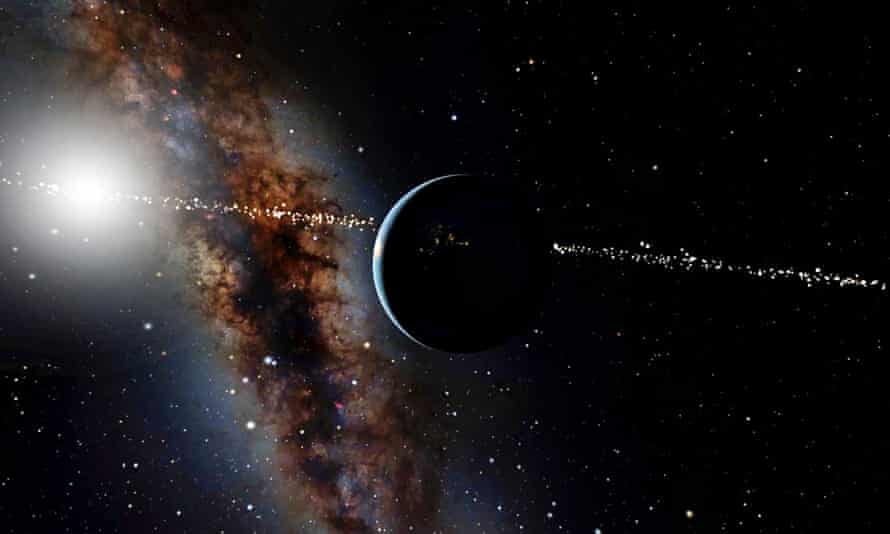Astronomers believe they have discovered a planet that orbits three stars at once for the first time.
GW Ori is a star system 1,300 light-years from Earth in the constellation of Orion. It is encircled by a massive dust and gas disc, which is a common feature of young star systems forming planets. It is, however, a system with not one but three stars.
However, the mystery continues: GW Ori’s disc is divided into two halves, similar to Saturn’s rings if there was a large gap between them, and the outer ring inclined at roughly 38 degrees.
The gap in the disc could be caused by the emergence of one or more planets in the system, according to the European Southern Observatory (ESO), and if this is the case, it would be the first known planet to orbit three stars at the same time.
A team of astronomers has now refined their model of the GW Ori system. Their findings, published in the Monthly Notices of the Royal Astronomical Society, imply that a gaseous planet the size of Jupiter is the best explanation for the massive gap in the dust cloud. Although we can’t see the planet directly just yet, it appears to be carving out its orbit.
Another possibility is that the gravitational tension of the stars clears the space in the disc; however, scientists feel there isn’t enough turbulence in the disc to justify this theory.
According to the New York Times, if the planet could support life and you could travel across interplanetary space to get there, you wouldn’t be able to see the three stars in the sky. Instead, you would only see a pair because the two innermost stars circle so close together that they appear as a single point of light. However, as the planet rotated, you would see the stars rise and fall in stunning sunrises and sunsets unlike any other planet known to man.
The planet’s existence is still a matter of controversy. Still, observations from the ALMA telescope and the Very Large Telescope in Chile in the following months may shed light on the subject.

